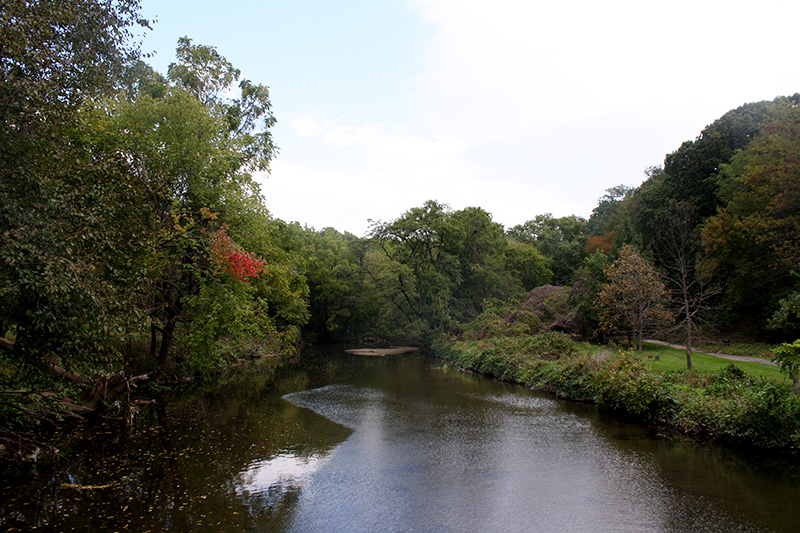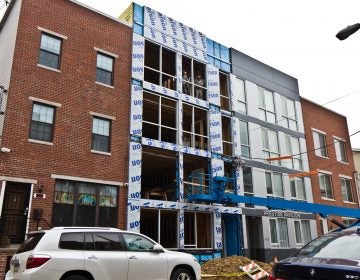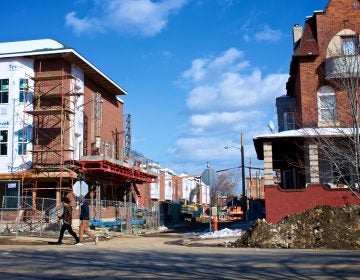Stream buffer bill won’t be finalized for at least two weeks

On Wednesday, City Council’s Committee on Rules heard from architects and developers, designers and environmentalists. It heard from economists and city planners, from bicycle advocates, engineers, and district councilmembers. It considered a citywide waterfront setback, it considered exceptions to that setback, and it considered amendments to the exceptions to the setback. It heard from so many voices crooning in imperfect harmony, in fact, that it did exactly what it did last time it considered this legislation, in June: it put it off.
Only this time, in punting, Chairman Bill Greenlee promised that the bill would be moved out of Committee one way or another on Wednesday, November 14th.
If Bill No. 120654 were to pass in the form it was introduced, it would prohibit new development within 50 feet of any watercourses identified on the Water Department’s hydrology maps. But it seems unlikely to pass without amendments. On Wednesday, Councilman Bobby Henon introduced a handful of amendments to the bill, which were drafted in cooperation with Councilman Bill Green, who did not attend the hearing.
“These changes have no impact on secondary and tertiary streams that were the focus of arguments about why we needed buffers of at least 50 feet from the bank,” said Councilmen Green and Henon in a statement. “It is worth nothing that passage of this bill even with the amendments is a significant victory for those concerned about water quality.”
The most significant of the Henon/Green amendments would allow for the expansion of nonconforming structures—buildings located within the 50-foot buffer—under a new set of guidelines. The amendment would create a new setback on parcels where a building currently exists within the buffer.
Therefore, a parcel with a building 20 feet from the top of a stream or river bank would have a buffer of 20 feet, to allow the existing building to expand parallel to the bank without getting a variance. Councilman Henon described the amendment as little more than “grandfathering” of existing uses, though it would go a step further by applying a smaller buffer to the whole parcel. Henon said the amendment was not intended to allow for new structures to be built within 50 feet of the bank—only to allow existing buildings to expand.
Another amendment would remove Planning Commission review of uses permitted by right in the underlying zoning on parcels on the Delaware and Schuylkill rivers.
“This amendment will eliminate unnecessary review, or control, by the Planning Commission and reduce delay to development projects,” Green and Henon said in their statement.
Other proposed amendments would apply the current zoning law to properties where developments are already in progress and owners have pulled permits, and adjust the definitions of certain industrial and marine-related uses. (It should be noted that an earlier threat to reduce buffers to 25 feet on non-river waterways seems to have disappeared.)
Councilman Henon—“In the spirit of transparency and in an effort to promote an informed dialogue about this issue”—distributed to Committee members a “Plan A” and a “Plan B” for amending the stream buffer bill. The former included the bill with the amendments suggested by him and Councilman Green. The latter included a different version of those amendments which incorporated suggestions from other stakeholders, including the environmental group PennFuture.
Plan B would put a limit—ten percent—on the total allowable expansion of structures within the 50-foot buffer zone. It would also account for the removal of Planning Commission review of permitted uses on the rivers by making them Special Exceptions, which would trigger a zoning hearing and allow for community input.
Councilman Henon himself supports Plan A; most of the witnesses at Wednesday’s hearing said they support the un-amended bill, but many said they could “live with” Plan B.
In a prepared statement, PennFuture’s Andrew Sharp reviewed the environmental benefits of stream buffers, and pointed out that the 50-foot regulation represented a compromise between environmentalists and developers. The negotiations during zoning reform began at 100 feet, the buffer recommended by the Pennsylvania Department of Environmental Protection. Sharp also said the buffer is particularly vital in light of the recent hurricane.
“Buffers remove property from harm’s way – and help manage and absorb stormwater,” Sharp said in a prepared statement. Due to climate change, he said, “There is more water, it’s coming faster, and there are fewer places to store it. Strong buffer requirements are a significant step that we can take now to prevent property destruction and protect our waterways.”
Throughout the hearing, Councilman Jim Kenney said that it was his job as an at-large representative to see that good policies are enacted citywide. But he also pointed out that it was the District Councilmember’s job to make sure those policies account for the particular characteristics of each part of Philadelphia. To that end, he reminded his fellow Councilmembers that, should the citywide buffer somehow serve their districts ill, it can always be trumped by a special overlay.
Testifying in support of a citywide 50-foot buffer were:
- Elizabeth Masters, on behalf of the American Institute of Architects
- Sarah Clark Stuart, on behalf of the Bicycle Coalition of Greater Philadelphia
- Maura McCarthy, on behalf of both the Friends of the Wissahickon and the Tookany/Tacony-Frankford Watershed Partnership
- Kiki Bolender, on behalf of the Design Advocacy Group
- Eva Gladstein, on behalf of the Planning Commission
- Chris Crockett, on behalf of the Water Department
- Lee Huang, on behalf of Econsult Corporation
- Karen Thompson, on behalf of the Delaware River Waterfront Corporation
- Joe Syrnick, on behalf of the Schuylkill River Development Corporation
- And a handful of public-minded private citizens
In her testimony, Eva Gladstein addressed the amendments floated by Councilmen Green and Henon.
“[The Planning Commission] would prefer to maintain the existing limits on the expansion of nonconforming properties within the 50-foot setback,” Gladstein said in prepared remarks. “Additionally, given that the Commission review provisions for ‘Additional Permitted Uses’ have been deleted, we believe that all of these uses within the setbacks on the Schuylkill and Delaware River (sic) should be subject to Special Exception review.”
Lee Huang, of Econsult, provided an economic rationale for stream buffer regulations that hasn’t been at the forefront of conversations about the law. Econsult was contracted by PennFuture in 2010 “to estimate the economic and fiscal impact of a fully connected waterfront greenway—or ‘buffer’—in Philadelphia, and has looked at the benefits of green infrastructure in a number of studies since then, both here as well as outside the region,” according to Huang’s testimony.
Huang said that Econsult’s analysis shows that a fully connected greenway would (1) increase visitor spending, (2) raise the total value of properties near the greenway by about $800 million of 30 years, (3) reduce health care costs by creating an estimated 7,000 new exercisers on the greenway, and (4) reduce CO2 emissions by providing new, non-automotive commuting possibilities.
Karen Thompson testified on behalf of DRWC President Tom Corcoran who, in a statement, reiterated the environmental benefits of buffers and also pointed out that 50 feet was a compromise regulation. Reading Corcoran’s statement, Thompson also stressed the importance of the buffer regulation for DRWC’s attempts to acquire land for a public trail on the river.
“Of equal importance to DRWC,” Thompson said, “is the principle that buffers of 50 feet will allow for future public access along the river’s edge. DRWC intends to acquire over time the rights to create a waterfront trail through the setback areas from private landowners via arms-length negotiations that would result in obtaining fee simple ownership, or permanent easements, and to design, build, and maintain the trail.”
Rich Lombardo, a member of the Development Workshop, said that while his group supports some buffer regulations, the legislation should reflect the zoned uses of certain waterfront parcels, and recognize that any future trail may have to be built around such parcels.
Kiki Bolender, chair of the Design Advocacy Group, used her testimony to implore members of the Rules Committee to abide by the spirit of zoning reform, a long, participatory process which sought to establish forward-looking, citywide policies.
Said Bolender, in a prepared statement, “Most of you are committed to the principles of waterway protection that are embodied in the new code, for which we at DAG heartily thank you and support you. We respectfully ask that you keep to the strength of your ideas, and reject cajoling from individuals who did not get their way, and now seek to dilute those protections.”
Contact the reporter at jaredbrey@gmail.com and follow him on Twitter @jaredbrey
WHYY is your source for fact-based, in-depth journalism and information. As a nonprofit organization, we rely on financial support from readers like you. Please give today.






